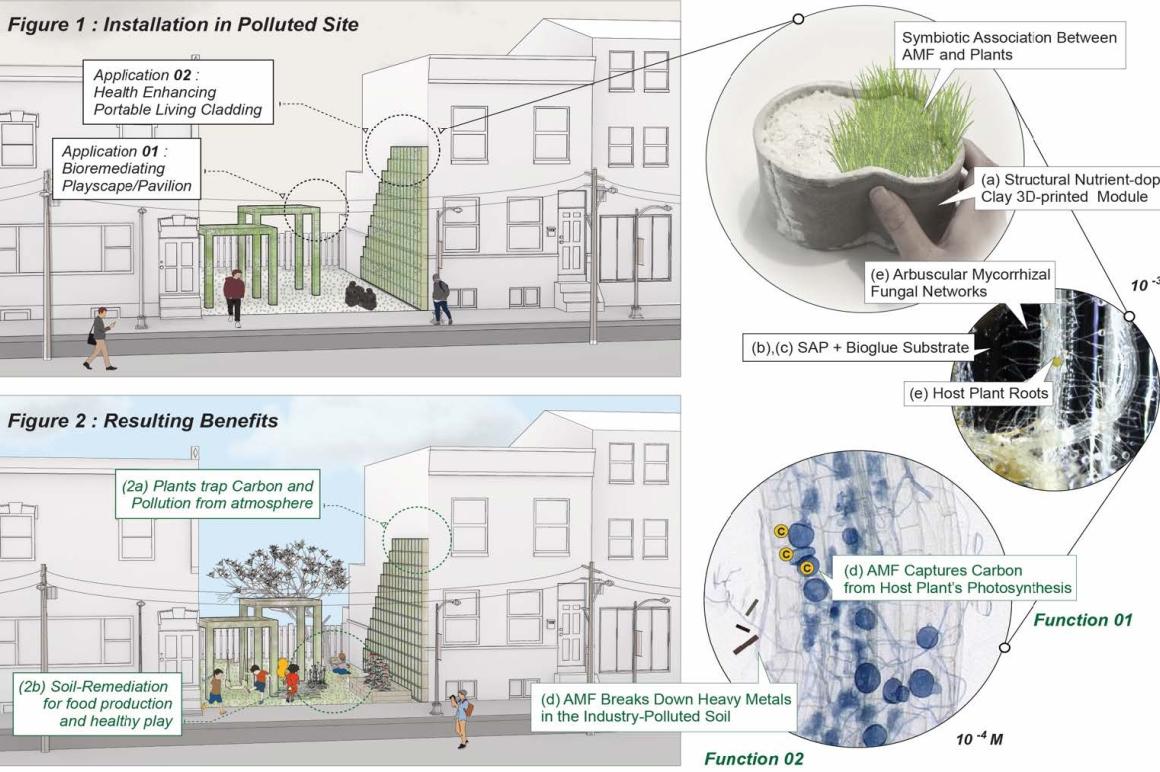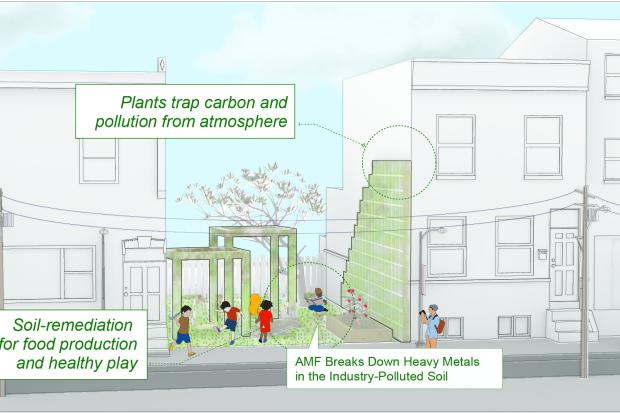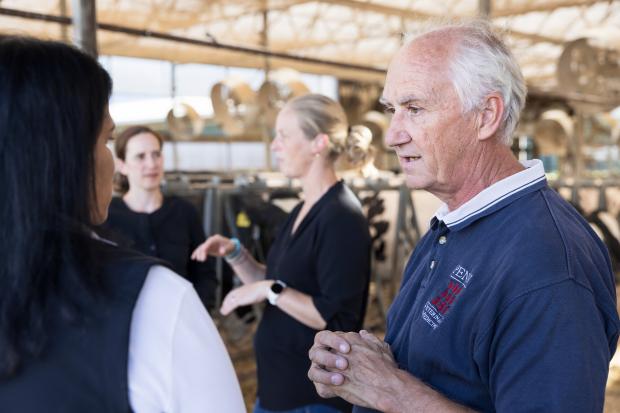Symbiotic Architecture for Environmental Justice

Soil and air pollution in Philadelphia affects the most vulnerable and is caused by the city’s climate, its long history of shipping and heavy industry, high traffic, and roadway materials. Soil and air is contaminated not only around industrial sites but throughout neighborhoods. Exposure has human health impacts with children being the most impacted with neurobehavioral disorders, reduced cognitive abilities, and internal organ function.
The Symbiotic Architecture for Environmental Justice research community aims to develop robust biology, large-scale geometry, and fabrication techniques to enable the bioremediation of polluted sites. The portable fungi-plant living materials for site-specific bioremediation have formats that span scales (vegetated cladding, urban furniture modules, and play structures), and aim to maximize carbon sequestration, heavy-metal absorption, pollutant trapping, and oxygen production.
Penn collaborators:
- Laia Mogas-Soldevilla, DumoLab, assistant professor at Architecture
- JiYoon Bae, PhD student, Sustainable Architecture
- Reto Giere, Geochemistry Lab, professor at Earth and Environmental Science
- Corlett Wood, Wood Lab, assistant professor of Biology
- Paulo Arratia, Complex Fluids Lab, professor at Mechanical Engineering and Applied Mechanics
- Michael Carroll, The Fisher Fine Arts Materials Library, assistant director
External partners:
- Mycopolitan Mushroom Company
- Miranda Hart, professor of Biology at UBC
- Vasalis Kokkoris, assistant professor at Vrije Universiteit
- Brenda Casper, professor emerita of Biology.

(Image: Laia Mogas-Soldevila)
Collaborators
Related News
“We explore using mycelium as a living building material (LBM) in architecture to harness its air and soil bioremediation properties during its entire life cycle.” - Laia Mogas-Soldevila, Weitzman School of Design








